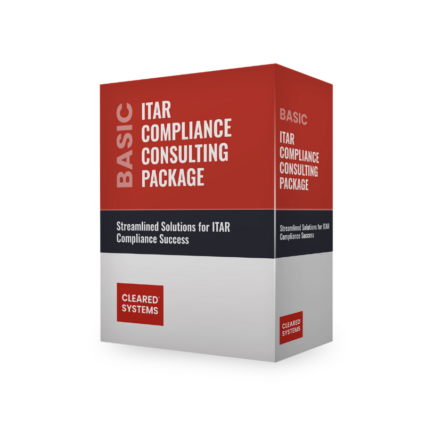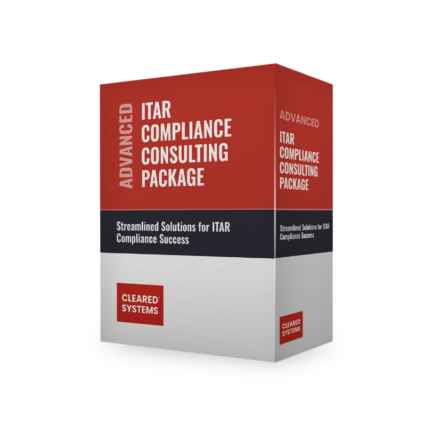ITAR Compliance: Proper Labeling of ITAR Documents and Records
The International Traffic in Arms Regulations (ITAR) is a United States regulatory framework that oversees the import and export of defense-related articles and services. It is a critical component of national security, and non-compliance can result in severe legal and financial repercussions. Companies that handle ITAR-controlled items and data are required to adhere strictly to these regulations. One of the key aspects of ITAR compliance is the proper labeling of ITAR documents and records. This is not just a bureaucratic requirement – it is a vital part of ensuring that sensitive information does not fall into the wrong hands.
In this article, we delve into the importance of proper labeling and explore the different types of labels used for ITAR documents and records. We aim to provide a comprehensive guide to help you navigate the complexities of ITAR compliance, ensuring that your organization stays on the right side of the law. Whether you’re new to ITAR or looking to enhance your existing knowledge, this article will serve as a valuable resource.
Why is Labeling ITAR Data Important?
Ensuring Regulatory Compliance
Proper labeling of ITAR-controlled documents and records is a fundamental aspect of ITAR compliance. It facilitates the identification of the classification level of the information, ensuring that it is handled in accordance with the stipulations outlined in 22 CFR 120-130. This is crucial in maintaining the integrity of sensitive data and preventing unauthorized access or disclosure.
Facilitating Efficient Tracking and Control
The practice of proper labeling plays a pivotal role in enabling efficient tracking and control of ITAR-controlled information. By clearly marking sensitive data, organizations can monitor the movement and access of this information more effectively, thereby reducing the risk of unauthorized access or disclosure. This is a key component of ITAR compliance and contributes significantly to enhancing overall data security.
Mitigating Legal and Financial Risks
Adherence to proper labeling protocols also aids in mitigating legal and financial risks associated with non-compliance. By ensuring that all ITAR-controlled data is correctly labeled, organizations can demonstrate their commitment to adhering to these important regulations, thereby avoiding potential penalties that could arise from non-compliance.
Promoting Organizational Awareness
Proper labeling also promotes awareness among employees about the sensitivity of the information they handle. This can foster a culture of compliance within the organization, where every individual understands their role in maintaining ITAR compliance.
Facilitating Audits and Inspections
Lastly, proper labeling can facilitate audits and inspections by demonstrating an organization’s commitment to ITAR compliance. Auditors can easily identify and verify the handling of ITAR-controlled data, making the audit process smoother and more efficient.
Proper labeling of ITAR-controlled data is not just a regulatory requirement but a strategic practice that enhances data security, promotes regulatory compliance, and mitigates legal and financial risks
Types of Labels for ITAR Documents and Records
Different agencies regulate the export and import of defense-related articles and services in the United States, and each agency uses different labels for ITAR documents and records. Here are some of the most common types of labels used for ITAR documents and records:
- Department of Defense (DoD) Labels: The DoD uses three levels of classification for ITAR-controlled documents and records – Confidential, Secret, and Top Secret. The labels used for these classifications typically include the words “ITAR Controlled” along with the classification level and a warning that unauthorized disclosure may result in criminal prosecution.
- Department of State (DoS) Labels: The DoS also uses three levels of classification for ITAR-controlled documents and records – Confidential, Secret, and Top Secret. The labels used for these classifications may include the words “ITAR Controlled” or “Defense Article/Service” along with the classification level and a warning that unauthorized disclosure may result in criminal prosecution.
- Export Administration Regulations (EAR) Labels: EAR regulates the export of “dual-use” items, which are items that have both commercial and military applications. The labels used for EAR-controlled items may include the words “EAR99” (for items that do not require a license) or “Export Controlled” (for items that require a license).
- International Traffic in Arms Regulations (ITAR) Labels: ITAR labels are used for defense articles and services, including technical data, blueprints, and schematics. The labels used for ITAR-controlled items may include the words “ITAR Controlled” along with the appropriate classification level.
Best Practices for Labeling ITAR Documents and Records
Ensuring ITAR compliance is a critical aspect for organizations dealing with defense-related articles and services. Here are some best practices for labeling ITAR documents and records:
Identifying ITAR Documents and Records
All employees who handle ITAR documents and records should have a clear understanding of what information falls under ITAR regulations as outlined in 22 CFR 120-130. This includes information related to defense articles or services, including technical data, blueprints, and schematics.
Using Proper ITAR Labels
Labels should be visible, easily identifiable, and affixed to the document or record in a prominent location. The appropriate label for the agency that regulates the information should be used, and it should include the words “ITAR Controlled” or “Defense Article/Service” along with the classification level. A warning that unauthorized disclosure may result in criminal prosecution should also be included.
Implementing Document and Record Control Procedures
Strict document and record control procedures should be in place for ITAR documents and records. This includes tracking the movement of these documents and records, maintaining a log of who has accessed them, and ensuring that they are stored in a secure location. These procedures are crucial for maintaining ITAR compliance.
Training Employees on Proper Labeling Procedures
All employees who handle ITAR documents and records should receive training on proper labeling procedures. This includes understanding the classification levels, the appropriate labels to use for each level, as well as the consequences of non-compliance. Regular training can ensure ongoing ITAR compliance.
Regularly Reviewing and Updating Labels
ITAR regulations and the agencies that enforce them can change over time, so it is important to regularly review and update the labels used for ITAR documents and records. This includes ensuring that the appropriate agency’s label is used and that the label includes the correct information for the classification level.
By following these best practices, organizations can ensure their ITAR compliance is maintained at all times.
Conclusion
Proper labeling of ITAR documents and records is critical for compliance with the regulations and ensuring the security of sensitive information related to defense articles and services. Companies should identify ITAR documents and records, use proper labels, implement document and record control procedures, train employees on proper labeling procedures, and regularly review and update labels to ensure compliance with ITAR regulations. Also read about AIP labels.
If you need assistance with ITAR compliance, including labeling of ITAR documents and records, consider using Cleared Systems for ITAR compliance consulting and training. Cleared Systems has a team of experts who can provide guidance on ITAR compliance, including proper labeling of documents and records, and help your company avoid legal and financial penalties for non-compliance. Contact Cleared Systems today to learn more.
Share in Social Media
See More Case Studies

Securing Defense Contracts: A DFARS 252.204-7012 Compliance Case Study
Discover how Cleared Systems helped a Federal Contractor successfully achieve DFARS 252.204-7012 compliance by strengthening its cybersecurity posture, giving it a competitive edge when bidding for DoD Contracts.

What is GCC High? For ITAR & CMMC 2.0
Microsoft 365 Government Community Cloud (GCC) High is a specialized cloud solution tailored for U.S. federal, state, local, tribal, and territorial government organizations, as well as for contractors who hold or process data subject to specific security regulations. In this article, we will explore the features, benefits, and differences between Microsoft 365 GCC High and other Office 365 offerings.

Is AutoCAD ITAR Compliant? A Comprehensive Guide for Defense Manufacturers
Defense contractors and manufacturers working with sensitive military technologies face a critical question when selecting computer-aided design software: Is AutoCAD ITAR compliant? This question becomes

How to Get Help in Windows: Guide to Security and Compliance Support
In today’s digital landscape, ensuring your computer systems are secure and compliant with industry regulations is essential for both businesses and individuals. Windows, as one

Microsoft Copilot for GCC High: Enhancing Security and Compliance
In today’s fast-evolving digital landscape, organizations that handle sensitive data, particularly those in government sectors or defense contractors, face growing pressure to maintain strict security
Partner with Us for Compliance & Protection
We’re happy to answer any questions you may have and help you determine which of our services best fit your needs.
Your benefits:
- Client-oriented
- Security
- Compliance
- Peace of mind
- Efficiency
- Trust
What happens next?
Schedule an initial meeting
Arrange a discovery and assessment call
Tailor a proposal and solution



